Comprehensive Analysis of Abscess Burst Under Skin: Symptoms, Treatment, and Prevention
What is an abscess and what causes it? How can an abscess be treated and prevented? Explore the various types of abscesses and the steps to get rid of them.
Understanding Abscesses: Causes and Symptoms
An abscess is a collection of pus that forms in response to an infection. This pus is typically composed of white blood cells, dead tissue, and bacteria. Abscesses can develop in various parts of the body, from the skin to deeper tissues. The most common causes of abscesses are bacterial infections, particularly those caused by Staphylococcus aureus and Streptococcus pyogenes.
Skin abscesses often appear as a swollen, pus-filled lump under the skin’s surface. They may be accompanied by other signs of infection, such as a high temperature and chills. Abscesses that form deeper within the body can cause localized pain and a high fever, with symptoms varying depending on the affected area.
Types of Abscesses: From Skin to Internal
Abscesses can be classified into two main types:

Skin Abscesses
Skin abscesses are the most common type and typically start as a pimple, boil, or insect bite. They then develop into a red, swollen, and painful lump filled with pus. These abscesses are often located on the skin’s surface.
Internal Abscesses
Internal abscesses form deeper within the body, such as in the abdomen, brain, or other organs. These abscesses can be more serious and may require more complex treatment, as the pus is not easily accessible.
One specific type of internal abscess is the pilonidal abscess, which develops in the cleft between the buttocks, just below the base of the spine.
Treating Abscesses: Draining and Antibiotics
The primary treatment for an abscess is to drain the pus. This is typically done through a small surgical procedure, where a healthcare provider makes an incision in the skin to allow the pus to drain. A local anesthetic may be used to numb the area, and a small piece of gauze may be left in the drainage hole to prevent it from sealing too quickly.
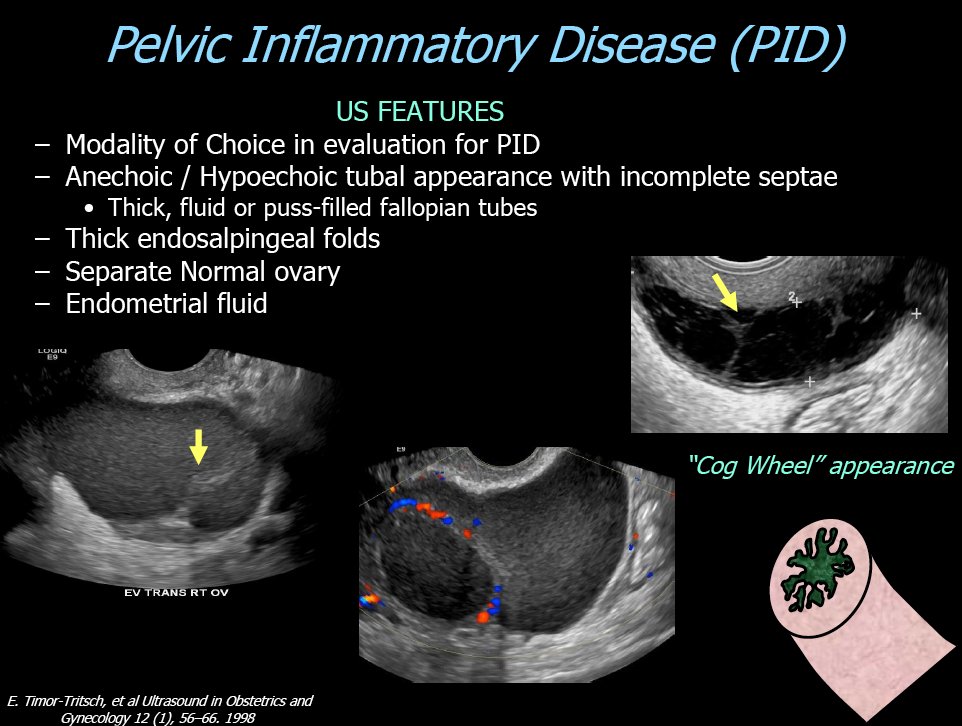
In some cases, antibiotics may also be prescribed, especially if there is a skin infection (cellulitis) accompanying the abscess. However, antibiotics alone are often not sufficient to treat the infection, and the drainage of the abscess is the most crucial step.
Can an Abscess Burst on Its Own?
A skin abscess may eventually burst and drain on its own, but this is not the recommended approach. Allowing the abscess to burst naturally can be risky, as it may not fully drain the pus and can lead to the infection spreading or worsening. Surgical drainage is usually the best option to ensure the abscess is properly treated.
Internal abscesses, on the other hand, should never be left to burst on their own, as this can be life-threatening. These types of abscesses require prompt medical treatment to drain the pus and control the infection.
Preventing Abscesses: Hygiene and Lifestyle Factors
While it may be difficult to prevent abscesses that develop internally, there are steps that can be taken to reduce the risk of developing skin abscesses:

- Maintain good personal hygiene, such as frequent handwashing and careful cleaning of any skin lesions.
- Wash clothes and bedding regularly to remove bacteria and prevent re-infection.
- Avoid sharing personal items like towels and clothing.
- Quit smoking and maintain a healthy weight, as these factors can increase the risk of developing abscesses.
- Seek prompt medical attention if you suspect an abscess, as early treatment can prevent the condition from worsening.
Seeking Medical Attention for Abscesses
If you suspect you have an abscess, it is important to seek medical attention. A healthcare provider can properly diagnose the abscess and determine the best course of treatment, which may involve draining the pus and, in some cases, prescribing antibiotics.
Attempting to treat an abscess at home, especially if it is deep within the body, can be extremely risky and should be avoided. Leaving an abscess untreated can lead to serious complications, including the spread of the infection and potentially life-threatening situations.
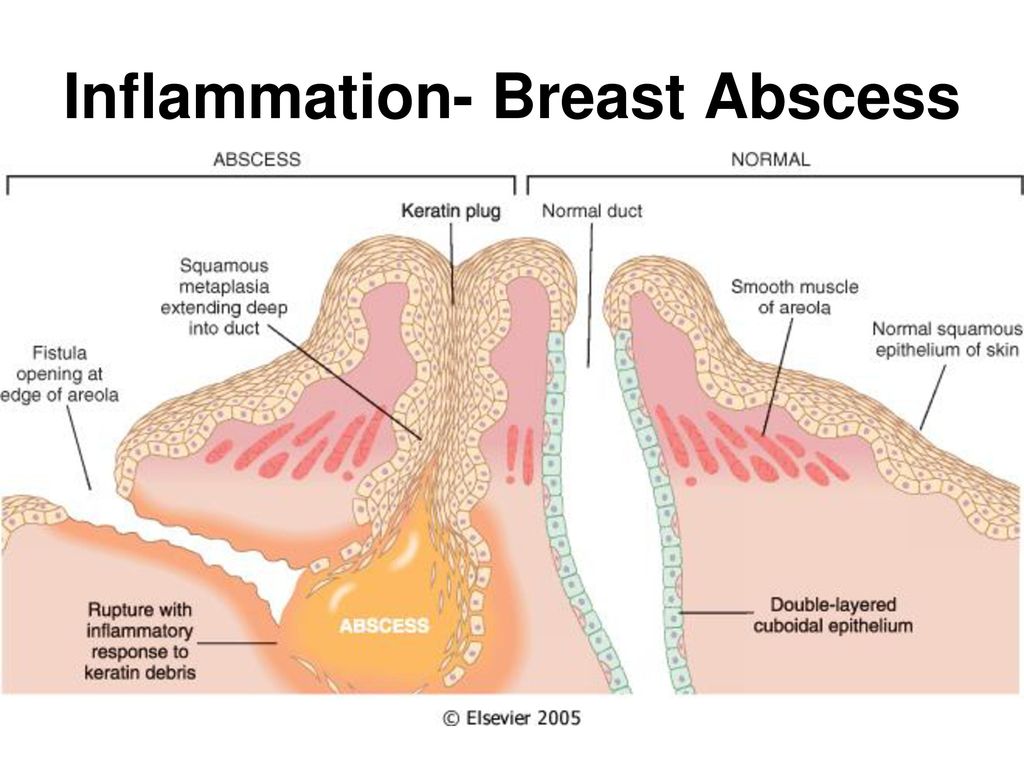
Conclusion
Abscesses are a common and often treatable condition, but they should not be taken lightly. Understanding the causes, symptoms, and appropriate treatment methods is crucial for managing and preventing these infections. By maintaining good hygiene, seeking prompt medical attention, and following the advice of healthcare professionals, individuals can reduce their risk of developing abscesses and ensure a successful recovery if one does occur.
Abscesses: Causes, Symptoms, and Treatment
In this series Anal Fistula
An abscess can develop in many different parts of the body. A small operation may be needed to drain the pus. You may also need to take antibiotic medicine.
Abscess
In this article
- What is an abscess?
- What causes an abscess?
- How to get rid of an abscess
- How to prevent abscesses
- Types of abscesses
- Who develops abscesses?
What is an abscess?
An abscess is a collection of pus. Pus is a thick fluid that usually contains white blood cells, dead tissue and germs (bacteria). The pus may be yellow or green and may have a bad smell.
What does an abscess look like?
A skin abscess often appears as a swollen, pus-filled lump under the surface of the skin. You may also have other symptoms of an infection, such as a high temperature and chills.
An abscess can form anywhere in your body, and can be in or just below the skin, or deeper within your body. An abscess has a typical appearance depending on the body part where it is formed.
Abscess: after five days
Amrith Raj, CC BY-SA 3.0, via Wikimedia Commons
By Amrith Raj, CC BY-SA 3.0, via Wikimedia Commons
- When an abscess forms in the skin, it initially looks like a pimple, boil, or an insect bite, but it then usually turns into a red, swollen lump, which is warm and tender to touch and filled with pus.
- When an abscess forms under the skin, it forms a painful swollen lump with raised and inflamed edges, often with surrounding redness.
- If an abscess forms deeper within the body, it usually causes localised pain with a very high temperature, but the symptoms will depend on which part of your body the abscess forms.
A pilonidal abscess is an infection of a pilonidal sinus. A pilonidal sinus develops in the cleft between your buttocks, just below the base of your spine (this is called the sacrococcygeal region). See also the leaflet Pilonidal Sinus for further information.
See also the leaflet Pilonidal Sinus for further information.
What causes an abscess?
The usual cause is an infection with bacteria entering the body. Certain bacteria are more likely to be ‘pus-forming’ as they make chemicals that can damage the body’s tissues. These include Staphylococcus aureus and Streptococcus pyogenes.
The infection causes the immune system to set off white blood cells and chemicals to fight the bacterial infection. In this ‘battle’ some tissue dies. A cavity forms and fills with pus. The cavity becomes bigger if the infection continues and the pus can’t get out.
How to get rid of an abscess
Draining the abscess
The main treatment is to drain the abscess. Usually this involves a small operation to make a cut in the skin and allow the pus to drain. A local anaesthetic may be used to numb the area but may not be necessary. A scar will form as the skin heals. If the abscess is deep, a small piece of gauze (antiseptic wick) may be put in the drainage hole. This stops the hole from sealing over before all of the pus has drained and the cavity has shrunk.
This stops the hole from sealing over before all of the pus has drained and the cavity has shrunk.
A more difficult operation is needed to drain the infection when it is inside the body. The techniques vary, depending on the site. Sometimes a tube will be left in the hole to drain the pus.
Medicines called antibiotics may also be prescribed, especially if there is a skin infection (cellulitis). However, they are often not able to treat the infection on their own.
Can an abscess burst on its own?
A skin abscess would normally eventually burst on to the skin surface and let out the pus. This may be after it becomes larger and more painful. So surgical drainage is usually best. However, a small boil may burst and heal without treatment.
An untreated abscess inside the body is usually very serious. You are likely to become very ill and treatment is usually needed.
How to prevent abscesses
An abscess is difficult to prevent inside the body as it usually happens in people who are ill with other problems.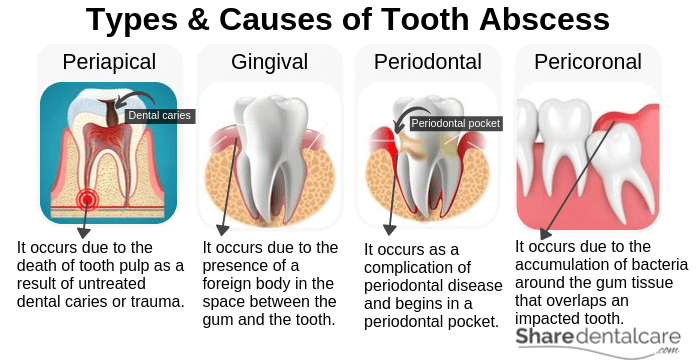
It may be possible to prevent a skin abscess. 1 in 10 people with them develop another one within 12 months. Good personal hygiene will reduce the number of bacteria on the skin and prevent re-infection. A large number of bacteria are frequently present on sheets and clothes of people with boils. Carefully washing clothes and sheets, and not sharing clothes and towels, may reduce the chances of re-infection or the chances of spreading the infection to friends and family members.
Used dressings and gauze should be thrown away to avoid spreading the infection further. Frequent changing of dressings is recommended for the same reason.
They are more common in people who smoke or are obese, so stopping smoking or losing weight, may help to prevent boils. They are also more common in young people (aged under 30), people with diabetes and people who have taken an antibiotic in the previous six months.
Types of abscesses
There are two different types of abscess:
Skin abscesses
Most abscesses form just under the skin. A boil is the most common example. In this case, a hair follicle becomes infected and develops into a small abscess. A gland just below the skin at the entrance to the vagina can become infected and develop into a Bartholin’s abscess. Occasionally, women who are breastfeeding can develop an infection in the breast and a abscess can occur (breast abscess). The symptoms of a skin abscess include swelling, redness, and pain, and they can often be warm to the touch. It is usually easier to treat a skin abscess.
A boil is the most common example. In this case, a hair follicle becomes infected and develops into a small abscess. A gland just below the skin at the entrance to the vagina can become infected and develop into a Bartholin’s abscess. Occasionally, women who are breastfeeding can develop an infection in the breast and a abscess can occur (breast abscess). The symptoms of a skin abscess include swelling, redness, and pain, and they can often be warm to the touch. It is usually easier to treat a skin abscess.
Internal abscesses
An abscess sometimes forms inside the body within an organ or in a space between organs. Various symptoms may occur, depending on the site of the abscess. This usually happens because of another condition. Infection in the liver, for example, can result in a liver abscess. An ultrasound scan or other types of scan can confirm the diagnosis. If infection occurs in the gums or teeth a dental abscess can develop.
Who develops abscesses?
Most skin abscesses occur in people who are otherwise well.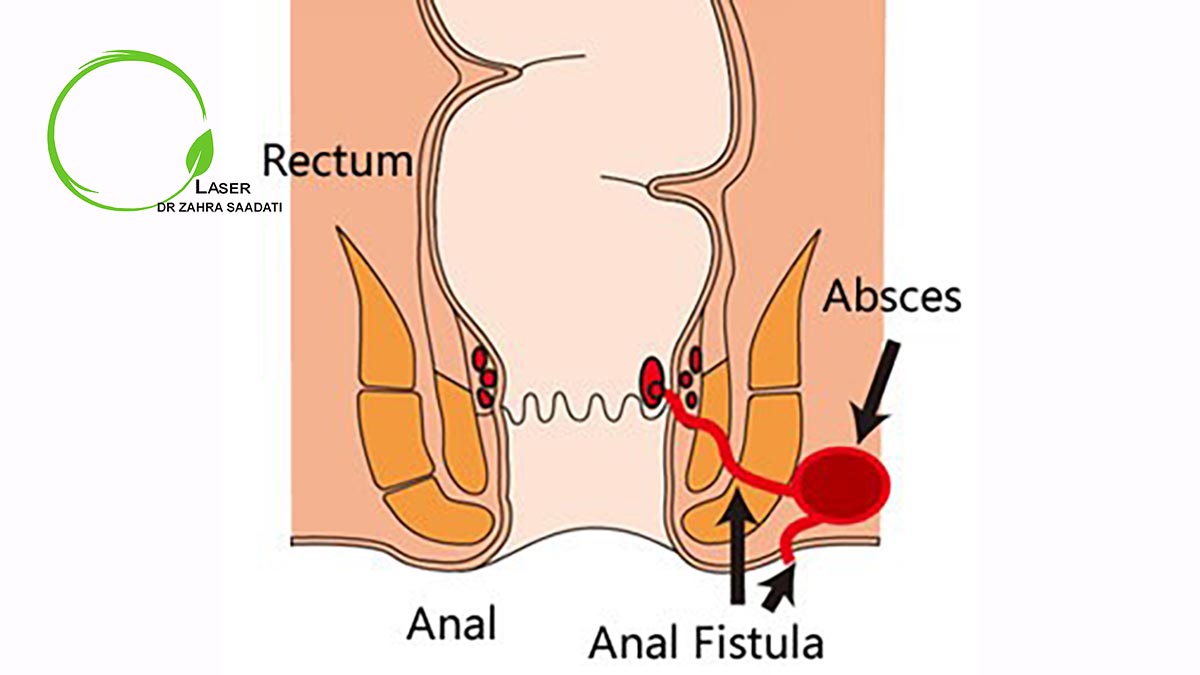 There is often no underlying cause and usually no further problems occur once it has gone. Your doctor may check your urine for sugar, as abscesses tend to occur more often in people with diabetes. Recurring skin abscesses may be the first indication of a problem with your immune system.
There is often no underlying cause and usually no further problems occur once it has gone. Your doctor may check your urine for sugar, as abscesses tend to occur more often in people with diabetes. Recurring skin abscesses may be the first indication of a problem with your immune system.
An abscess inside the body usually occurs in people who are ill with other medical conditions, or in people whose immune system is not working well. For example, a lung abscess may form following a bout of pneumonia; a brain abscess may form after a penetrating head wound (an injury in which the outer covering of the brain is pierced) which can be life-threatening.
Boils, carbuncles, and staphylococcal carriage; NICE CKS, January 2017 (UK access only)
Boils; DermNet NZ
Shallcross LJ, Hayward AC, Johnson AM, et al; Incidence and recurrence of boils and abscesses within the first year: a cohort study in UK primary care. Br J Gen Pract. 2015 Oct65(639):e668-76.
 doi: 10.3399/bjgp15X686929.
doi: 10.3399/bjgp15X686929.Ju NR, Koyfman A; Do oral antibiotics after incision and drainage of simple abscesses improve cure rates? Ann Emerg Med. 2015 Jan65(1):112-3. doi: 10.1016/j.annemergmed.2014.08.007. Epub 2014 Sep 8.
Folliculitis and Skin Abscesses – Skin Disorders
By
Wingfield E. Rehmus
, MD, MPH, University of British Columbia
Reviewed/Revised Apr 2021 | Modified Sep 2022
VIEW PROFESSIONAL VERSION
GET THE QUICK FACTS
Topic Resources
Folliculitis and skin abscesses are pus-filled pockets in the skin resulting from bacterial infection. They may be superficial or deep, affecting just hair follicles or deeper structures within the skin.
They may be superficial or deep, affecting just hair follicles or deeper structures within the skin.
(See also Overview of Bacterial Skin Infections Overview of Bacterial Skin Infections The skin provides a remarkably good barrier against bacterial infections. Although many bacteria come in contact with or reside on the skin, they are normally unable to establish an infection… read more .)
Folliculitis is a type of small skin abscess that involves the hair follicle. Other types of abscesses may appear both on the skin surface and within the deeper structures of the skin without always involving a hair follicle. Most skin abscesses Skin abscesses Folliculitis and skin abscesses are pus-filled pockets in the skin resulting from bacterial infection. They may be superficial or deep, affecting just hair follicles or deeper structures within… read more are caused by Staphylococcus aureus bacteria and appear as pus-filled pockets on the skin surface. Recently, a strain of Staphylococcus that is resistant to previously effective antibiotics Antibiotic resistance Bacteria are microscopic, single-celled organisms. They are among the earliest known life forms on earth. There are thousands of different kinds of bacteria, and they live in every conceivable… read more has become a more common cause. This strain is called methicillin-resistant Staphylococcus aureus (MRSA Methicillin-resistant Staphylococcus aureus (MRSA) Staphylococcus aureus is the most dangerous of all of the many common staphylococcal bacteria. These gram-positive, sphere-shaped (coccal) bacteria (see figure ) often cause skin infections… read more ).
Recently, a strain of Staphylococcus that is resistant to previously effective antibiotics Antibiotic resistance Bacteria are microscopic, single-celled organisms. They are among the earliest known life forms on earth. There are thousands of different kinds of bacteria, and they live in every conceivable… read more has become a more common cause. This strain is called methicillin-resistant Staphylococcus aureus (MRSA Methicillin-resistant Staphylococcus aureus (MRSA) Staphylococcus aureus is the most dangerous of all of the many common staphylococcal bacteria. These gram-positive, sphere-shaped (coccal) bacteria (see figure ) often cause skin infections… read more ).
Sometimes the bacteria enter the skin through a hair follicle, small scrape, or puncture, although often there is no obvious point of entry. People who live in crowded conditions, have poor hygiene or chronic skin diseases, or whose nasal passages contain Staphylococcus are more likely to have episodes of folliculitis or skin abscesses.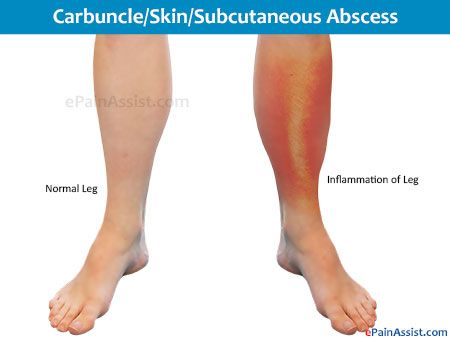 A weakened immune system, obesity Obesity Obesity is excess body weight. Obesity is influenced by a combination of factors, which usually results in consuming more calories than the body needs. These factors may include physical inactivity… read more , old age, and possibly diabetes Diabetes Mellitus (DM) Diabetes mellitus is a disorder in which the body does not produce enough or respond normally to insulin, causing blood sugar (glucose) levels to be abnormally high. Urination and thirst are… read more are also common risk factors. Some people may have recurring episodes of infection for unknown reasons.
A weakened immune system, obesity Obesity Obesity is excess body weight. Obesity is influenced by a combination of factors, which usually results in consuming more calories than the body needs. These factors may include physical inactivity… read more , old age, and possibly diabetes Diabetes Mellitus (DM) Diabetes mellitus is a disorder in which the body does not produce enough or respond normally to insulin, causing blood sugar (glucose) levels to be abnormally high. Urination and thirst are… read more are also common risk factors. Some people may have recurring episodes of infection for unknown reasons.
Doctors may try to eliminate Staphylococcus from people prone to recurring infections by instructing them to wash their entire body with antibacterial soap, apply antibiotic ointment inside the nose where the bacteria can hide, and take antibiotics by mouth.
Folliculitis is an infection of a hair follicle. It looks like a tiny red or white pimple at the base of a hair. There may be only one infected follicle or many. Each infected follicle is itchy or slightly painful, but the person otherwise does not feel sick.
There may be only one infected follicle or many. Each infected follicle is itchy or slightly painful, but the person otherwise does not feel sick.
Some people develop folliculitis after exposure to a poorly chlorinated hot tub or whirlpool. This condition, sometimes called “hot tub folliculitis” or “hot tub dermatitis,” is caused by the bacterium Pseudomonas aeruginosa. It begins anytime from 6 hours to 5 days after the exposure. Areas of skin covered by a bathing suit, such as the torso and buttocks, are the most common sites.
Some people develop mild folliculitis in areas subjected to moisture and friction, such as areas under sports equipment or on the buttocks.
Infected hairs easily fall out or may be plucked out, but new pimples tend to develop.
Sometimes stiff hairs in the beard area (or in any area that is shaved) curl and reenter the skin (ingrown hair) after shaving, causing mild irritation and inflammation. However, there is no actual infection. This type of folliculitis is called pseudofolliculitis barbae Ingrown Beard Hairs Pseudofolliculitis barbae is caused by ingrown hairs, usually in the beard, that become inflamed when the hairs penetrate the skin before they leave the hair follicle or after they leave the… read more .
This type of folliculitis is called pseudofolliculitis barbae Ingrown Beard Hairs Pseudofolliculitis barbae is caused by ingrown hairs, usually in the beard, that become inflamed when the hairs penetrate the skin before they leave the hair follicle or after they leave the… read more .
For severe, recurring folliculitis, doctors may take a bacterial culture (a sample of pus is sent to a laboratory and placed in a culture medium that allows microorganisms to grow). The results of the culture are used to guide the choice of antibiotic.
Folliculitis is treated with antibacterial cleansers or antibiotics that are applied directly to the skin (topically). Large areas of folliculitis may require antibiotics taken by mouth.
Hot tub folliculitis goes away in a week without any treatment. However, adequate chlorination of the hot tub or whirlpool is necessary to prevent recurrences and to protect others from infection.
Folliculitis caused by ingrown hairs is treated by a number of methods with varying success.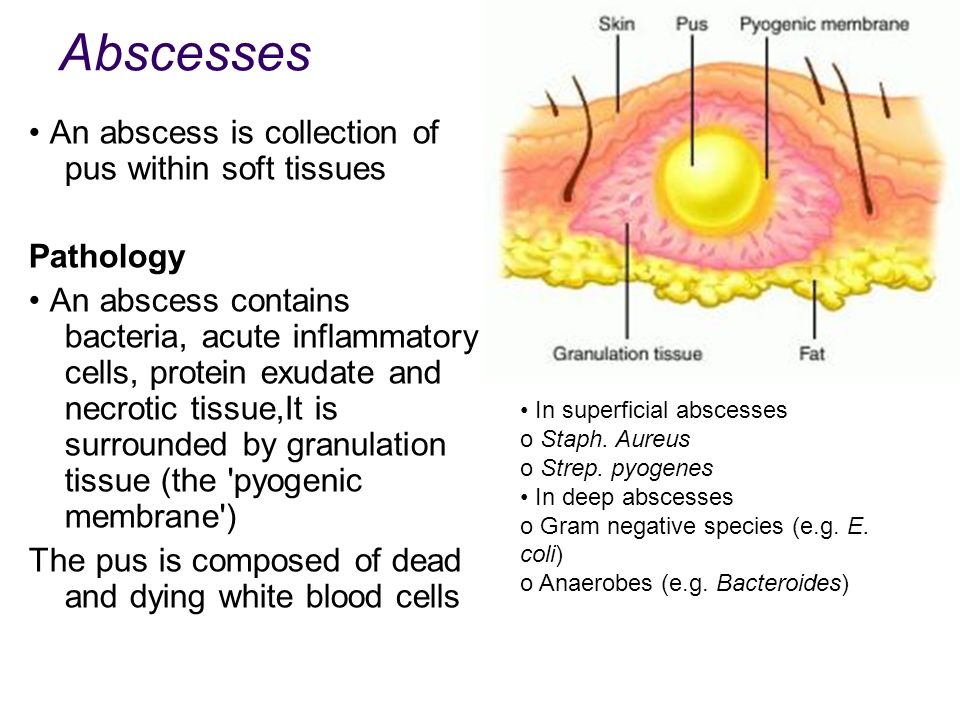 The person may need to temporarily stop shaving.
The person may need to temporarily stop shaving.
Skin abscesses are warm, painful, pus-filled pockets of infection below the skin surface that may occur on any body surface. Abscesses may be one to several inches in diameter.
Furuncles and carbuncles are types of skin abscesses.
Furuncles (boils) are tender, smaller, more superficial abscesses that by definition involve a hair follicle and the surrounding tissue. Furuncles are common on the neck, breasts, face, and buttocks. They are uncomfortable and may be particularly painful in sensitive areas (for example, on the nose, ear, or fingers).
Abscess Furuncle (Boil)
The furuncle (boil) in this photo is a tender, swollen, pus-filled area.
Photo provided by Thomas Habif, MD.
Furuncle Under the Eyebrow
This woman has a red, inflamed furuncle under her eyebrow.
DermPics/SCIENCE PHOTO LIBRARY
Carbuncle
This photo shows a carbuncle found on the back of the neck. It is formed by a cluster of interconnected furuncles, which are painful, pus-filled, inflamed hair follicles.
SCIENCE PHOTO LIBRARY
Carbuncles are clusters of furuncles that are connected to one another below the skin surface.
If not treated, abscesses often come to a head and rupture, discharging a creamy white or pink fluid. Bacteria may spread from the abscess to infect the surrounding tissue and lymph nodes. The person may have a fever and feel generally sick.
Doctors diagnose skin abscesses based on their appearance. Sometimes, doctors send pus samples to a laboratory to identify the bacteria (called a culture).
A skin abscess may go away with application of warm compresses. Otherwise, a doctor treats an abscess by cutting it open and draining the pus. After draining the abscess, a doctor makes sure all of the pus has been removed and washes out the pocket with a sterile saline solution. Large abscesses over 5 centimeters (about 2 inches) in diameter may require temporary packing with gauze. If the abscess is completely drained, antibiotics usually are not needed.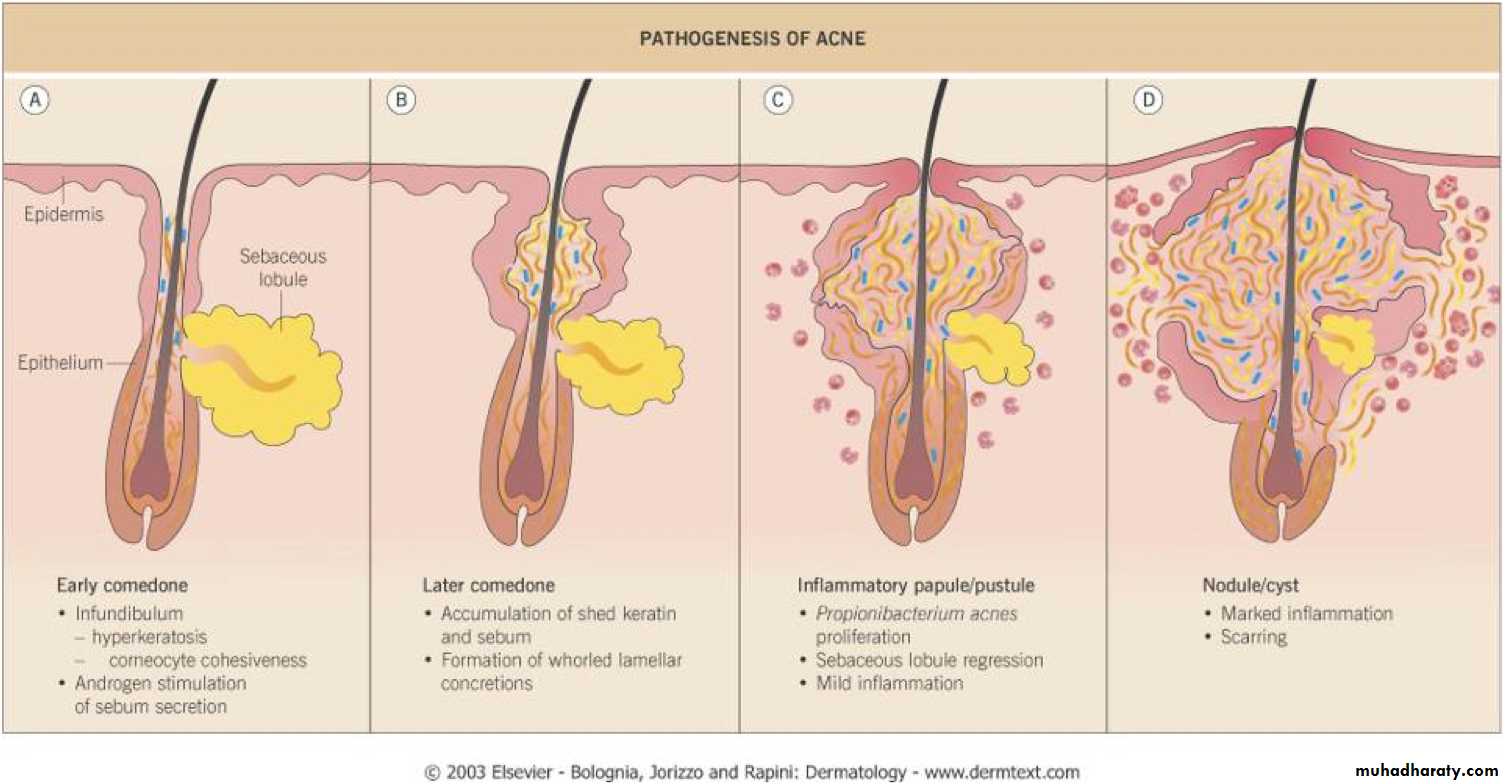 However, antibiotics, taken by mouth, might be given because of the following:
However, antibiotics, taken by mouth, might be given because of the following:
The abscess did not resolve with drainage.
The person has a weakened immune system.
The infection has spread into nearby skin (cellulitis Cellulitis Cellulitis is a spreading bacterial infection of the skin and the tissues immediately beneath the skin. This infection is most often caused by streptococci or staphylococci. Redness, pain, and… read more ).
The person has many abscesses.
The person is at risk of developing a heart infection (endocarditis).
The abscess is on the middle part of the face.
The person has fever.
People who have recurring skin abscesses can wash their skin with liquid soap that contains special antiseptics and take antibiotics for 1 to 2 months.
NOTE:
This is the Consumer Version.
DOCTORS:
VIEW PROFESSIONAL VERSION
VIEW PROFESSIONAL VERSION
Copyright © 2023 Merck & Co., Inc., Rahway, NJ, USA and its affiliates. All rights reserved.
Test your knowledge
Take a Quiz!
causes, care, treatment and complications – MC “Harmony”
An abscess is an accumulation of pus deep under the skin. A pathological neoplasm forms when the body tries to protect itself from infection. Small boils usually go away on their own, but long-term rotting can be life-threatening.
Causes of an abscess
Pus consists of bacteria, white blood cells and dead skin cells. To prevent the substance from spreading through the bloodstream, the body encloses pus in a special bag, which is felt like a pimple. The trigger of the purulent process is Staphylococcus aureus, which can be found on the skin of most healthy people.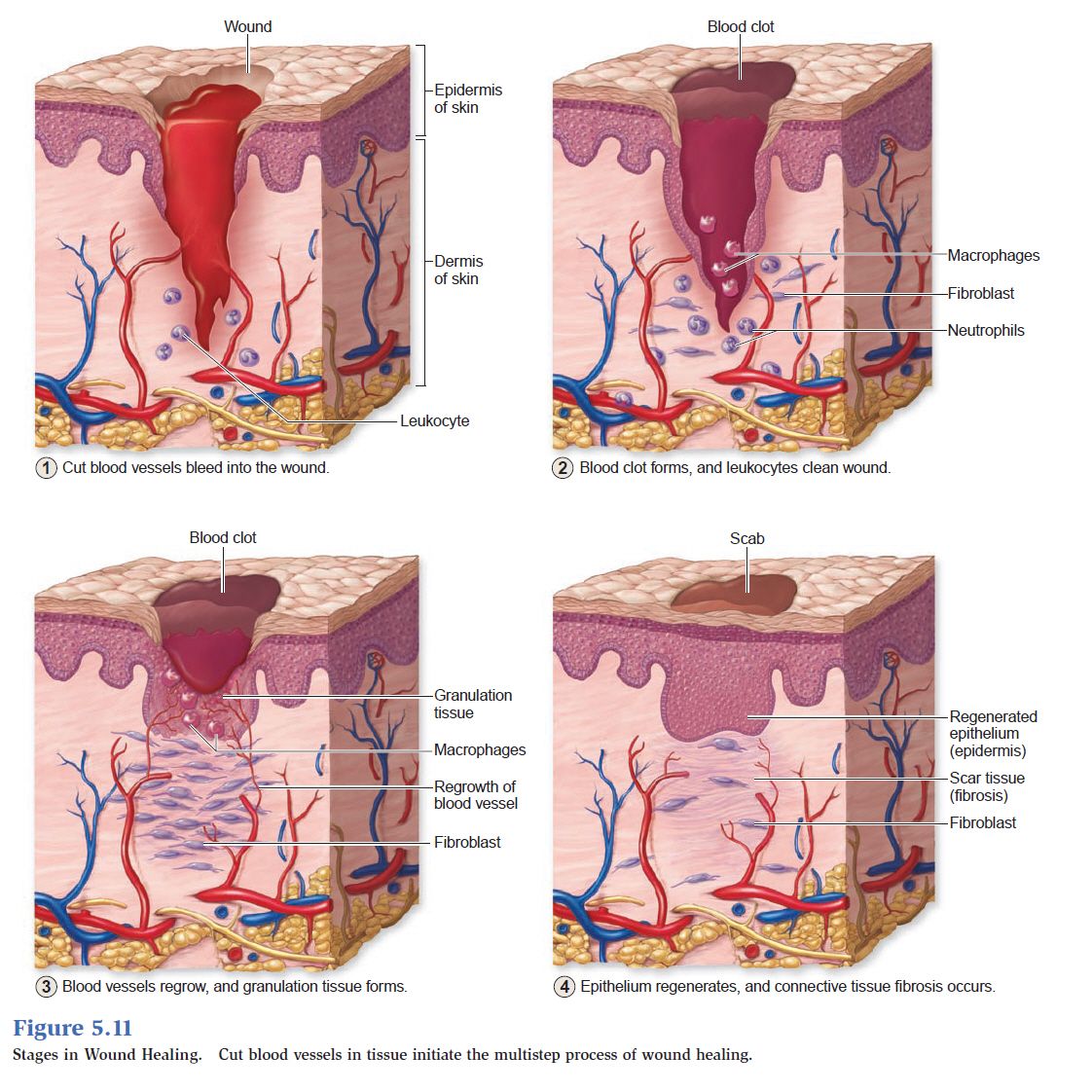 However, an abscess only develops when bacteria enter the skin (usually through an incision or wound).
However, an abscess only develops when bacteria enter the skin (usually through an incision or wound).
Home abscess care?
The main rule for skin care with a pathological neoplasm: do not try to open the abscess yourself. Even if it seems that the pus itself is about to come out, you should not “help” him and pierce the subcutaneous pimple. Ignoring such a simple rule can cost a life. Too deep a puncture can lead to the fact that pus enters the bloodstream and provokes extensive sepsis.
Surgical opening of abscess
If the subcutaneous formation pulsates and grows in breadth, and not up, you need to see a doctor. The surgeon will anesthetize the area around the abscess, and then cut out the pathological accumulation of pus with a scalpel. Sometimes, to clean out the entire subcutaneous pocket, it takes more than one hour of the doctor’s work. If the abscess was very deep, then a drainage tube is placed in the cleaned wound. After the procedure is completed, a sterile gauze dressing is applied to the wound, which will absorb the remnants of pus and physiological fluids.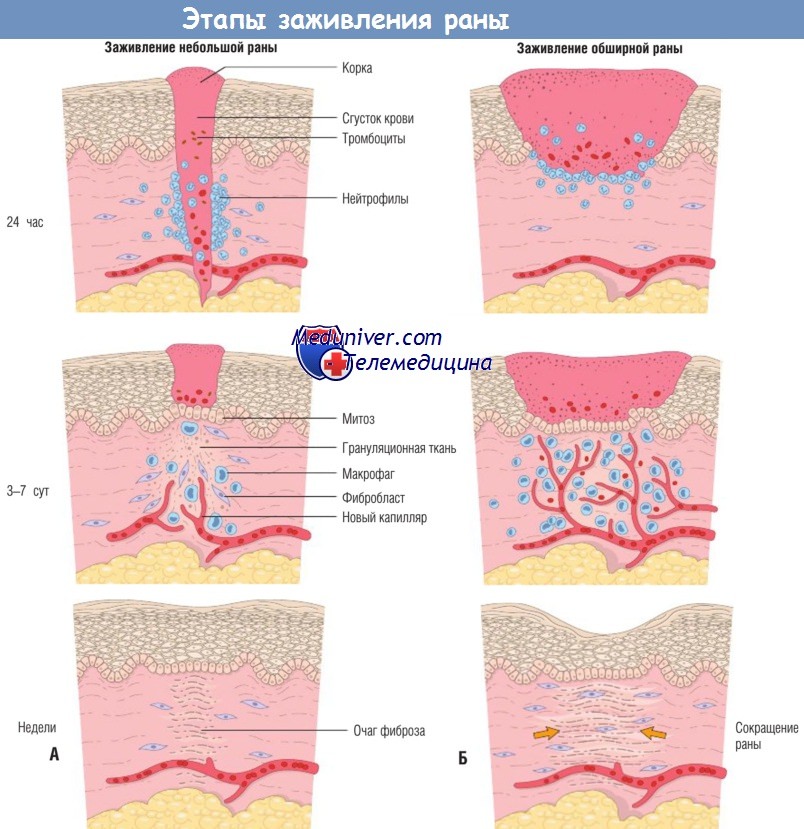
Complications and side effects
If the procedure was carried out by a professional doctor, the patient may not be afraid of complications in the form of sepsis and re-suppuration. However, people who smoke or suffer from autoimmune diseases may experience the following side effects:
- post-manipulation pain;
- prolonged bleeding;
- the appearance of a scar.
Even minimal surgery is best left to professionals. In the medical center “Harmony” they perform autopsies of abscesses of any category of complexity. Doctors have all the necessary diplomas, and also regularly improve their qualifications. Make an appointment and forget about the pain!
Cost of services
| Code | Service name | Cost |
|---|---|---|
| 1112 | Opening of abscesses, phlegmon 1 category of complexity | 3500 rub |
| 1113 | Opening of abscesses, phlegmon 2 category of complexity | 5000 rub |
| 1114 | Opening of abscesses, phlegmon 3 category of complexity | 6000 rub |
LLC “Harmony” provides discounts of 10%:
Pensioners, disabled people, veterans, large families.
Individual discount for major surgeries, ask the administrator for details.
Abscess-abscess, purulent inflammation in cats
Contents
- Signs of the disease
- Risk group
- Diagnosis
- Treatment
- Prevention for owners of a pugnacious pet
- Purulent inflammation of the paraanal gland
Abscess (abscess) – inflammation with the formation of a purulent cavity on the cat’s body.
The cause for the occurrence is the presence of small wounds and bites. Through damage to the skin, streptococci and staphylococci enter the body, which actively multiply inside the skin. Pathology does not pose a big threat, it is easy to get rid of it with timely treatment.
When bacteria enter the body, the immune system begins to actively fight them, pus forms under the skin. A healthy pet’s body can cope with inflammation on its own, otherwise an abscess occurs.
Two forms of the disease are common:
1. Dental abscess. Occurs in the presence of advanced periodontal disease, localized in the area of the roots of the tooth.
Dental abscess. Occurs in the presence of advanced periodontal disease, localized in the area of the roots of the tooth.
2. Battle abscess. Manifested in the presence of injuries of the skin as a result of fights, in case of further infection. On the teeth and in the oral cavity, the animal contains a large number of pathogenic bacteria; during the bite, a puncture wound is formed and they freely penetrate the pet’s skin.
Symptoms
An abscess is a swollen bump that is hot and soft to the touch. Most often, the places of localization are the ears, head, neck and limbs. Abscesses can form in body cavities, such as at the base of teeth. An abscess can be closed and open, in the second case, the inflamed area secretes pus and blood, an unpleasant odor and scabs appear.
In the presence of purulent inflammation, the cat may have a fever, there is lethargy, irritability. In most cases, the cat does not allow touching the inflammation, as this is accompanied by pain. Lesions on the feet cause lameness. A dental abscess causes a complete refusal to eat.
Lesions on the feet cause lameness. A dental abscess causes a complete refusal to eat.
Risk group
The main reason for the appearance of an abscess is the free walking of a pet on the street. Your pet may meet an aggressive animal or attack another cat itself, resulting in scratches and wounds that cause boils. At the same time, non-neutered cats often come into conflict, the chance of their infection is much higher.
Cats and neutered cats are not excluded from the risk group, but they are much less likely to develop an abscess. Since they are calmer and by their nature are practically not aggressive. In order to prevent it is worth limiting access to the street. If you think your pet needs a walk, use a harness with a leash and control it.
Therapy
Do not delay the appeal to the doctor! In the therapeutic department of the Vetara clinic, the veterinarian will listen to the owner’s complaints, collect a detailed history and prescribe the necessary treatment for the pet.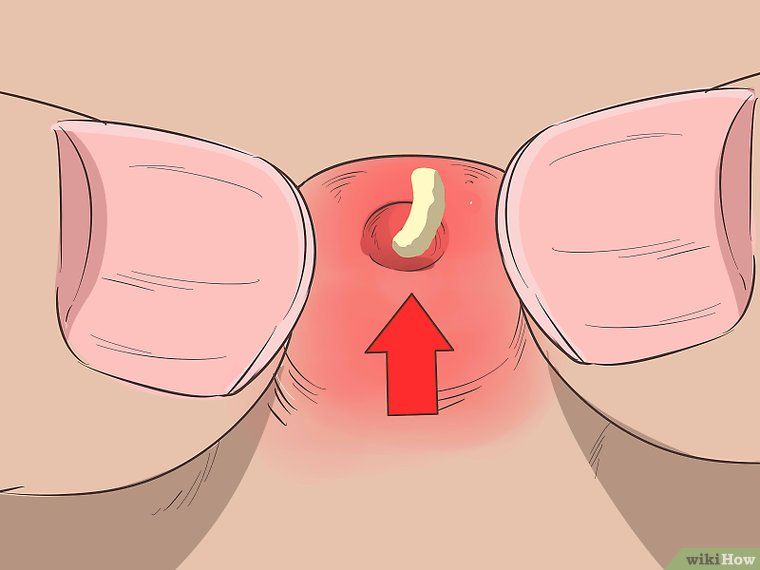
Read more ➞
Male individuals in the age range from one to seven years always remain at risk. During this period, cats are more energetic and often come into conflict. At the same time, aggressive behavior can be observed both on the street and at home.
The chance of getting sick increases if another cat is brought into the house. Depending on the nature of the already living pet, conflict situations may arise between them.
Diagnosis
The presence of an abscess in a cat is determined by external examination. Palpation allows you to accurately determine the area of inflammation and boundaries. On the inflamed area, the hair is cut off, quite often there you can see traces of previously inflicted damage to the pet.
In some cases, a fluid sample is taken from the site of infection to identify the type of bacteria. The disease at an early stage is not always possible to detect at the initial examination, often additional visits to the doctor are required.
Treatment
The method of treatment depends on the state of the inflammatory process. At the first stages, a penicillin-novocaine blockade is prescribed, treatment is carried out with warming compresses and the introduction of streptocides to combat the source of infection. A mature abscess is incised with a scalpel to remove purulent secretions. The open wound is washed with antiseptics and an antimicrobial ointment is placed in the cavity.
In cases of deep, large abscess, the washed wound is sutured and drainage tubes are inserted. Newly formed pus is removed through them and antiseptics are injected. As the area of inflammation decreases, the tubes are removed. At the time of treatment, a course of painkillers is prescribed. Almost always, a cat wears a cone-shaped collar to avoid scratching the wound.
If it is not possible to show a cat to a specialist, you can treat yourself. Excluding advanced cases or elevated temperature of the pet. To ripen the abscess, a heating pad or a warm compress is used. A ripe abscess must be opened and the pus removed with sterile wipes. The wound is washed with hydrogen peroxide or furatsilin, a bandage is applied with Vishnevsky ointment. The site of inflammation must be washed and a new bandage applied every day, until complete healing. It is recommended that you contact your veterinarian as soon as possible.
A ripe abscess must be opened and the pus removed with sterile wipes. The wound is washed with hydrogen peroxide or furatsilin, a bandage is applied with Vishnevsky ointment. The site of inflammation must be washed and a new bandage applied every day, until complete healing. It is recommended that you contact your veterinarian as soon as possible.
Prevention for owners of a pugnacious pet
Cats with a heavy and groovy character are always at risk. They most often take serious damage from opponents and earn themselves an abscess. A more serious consequence of the disease may be the appearance of feline AIDS. Such pets need preventive medical examinations from a specialist.
It is worth remembering that an animal with a history of inflammation is much more likely to become infected again. The best prevention is to limit outdoor activities for the pet. Castrated and sterilized individuals are less aggressive towards their relatives.
Purulent inflammation of the anal gland
An abscess may appear in the anus, which is associated with the presence of paraanal glands.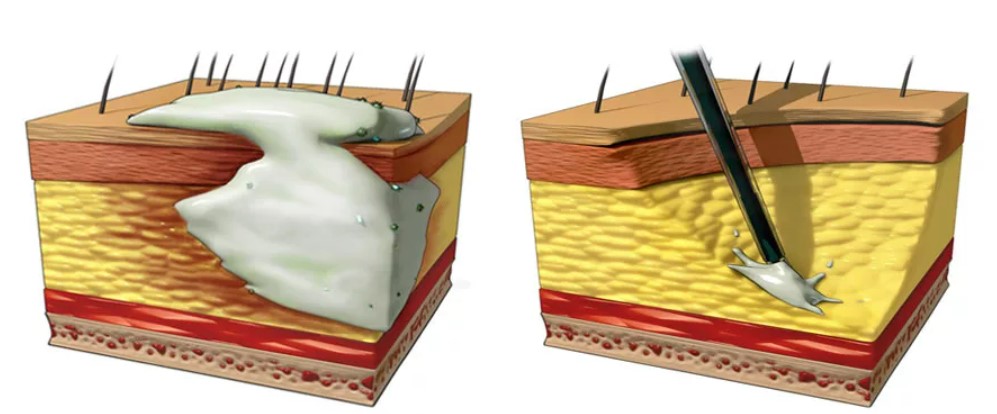

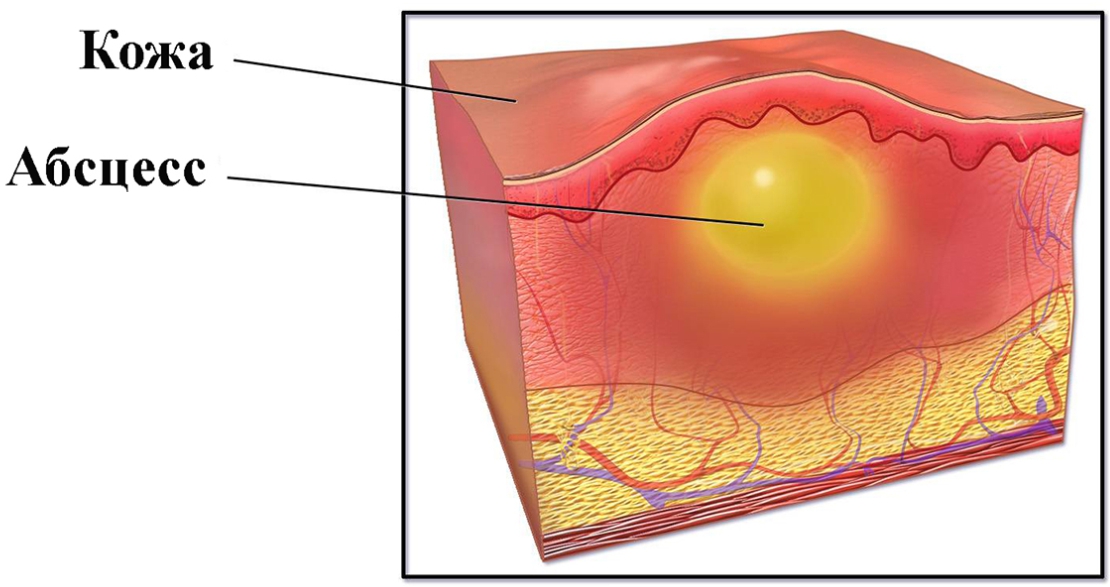 doi: 10.3399/bjgp15X686929.
doi: 10.3399/bjgp15X686929.